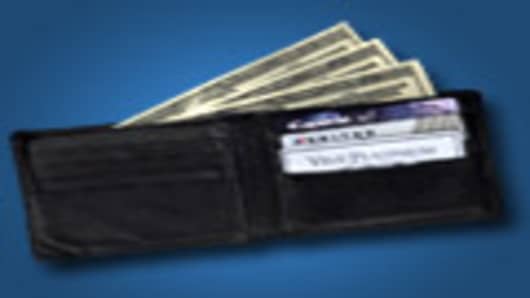The vast majority of parents say they are good financial role models for their children ... but they may be kidding themselves.
A new survey from Charles Schwab suggests that parents fail to pass along even basic financial skills to their teens, and that they are sloppy themselves in the way they manage money. And remember: Teens see everything!
"There's a real disconnect between what parents think is important for kids to learn and what they are actually teaching them," says Carrie Schwab Pomerantz, the firm's consumer chief and the daughter of founder Charles Schwab. More parents teach their kids how to shop rather than how to save. Only one family in five involves their teenagers in family budget matters.
Pomerantz says that she didn't have very many money talks with her famous father until she was in her 20s and got interested in finance herself. But she's starting much earlier with her own three children, talking with them about allowances, budgeting and even investing.
Here are some ways to be good role models for your kids and also to teach them the basics of money.
- Give them some. An allowance is crucial to a child's ability to learn to manage money. So is the leeway to make mistakes. Encourage them to spend some of their money on fun things, to save some for their own longer-term goals and donate some. When they spend it all on candy the first day, and don't have enough to go to the movies with their friends at the weekend, don't bail them out.
- Match savings. Offer to match the amount your kids set aside for the long term.
- Encourage them to play online games. There are a variety of kid-focused calculators and money games on line. Some are better than others, but you can get a cross section at the website of the Alliance for Investor Education.
- Make them work for it. Teens should have jobs. Kids who work have more pride in themselves and much more interest in learning to manage their money correctly. They're better savers, too.
- Model good behavior. If your own credit cards are maxed out, that's what your kids will think is normal. If you're fixing the situation through belt tightening and extra monthly payments, do talk about that at the table. You don't have to let your kids see your paycheck or know the intimate details of the family's finances, but they should see you saving and investing, and talking about money in a way that is calm, healthy, and not fraught with emotion.
- Talk about family choices. Instead of just saying "yes" or "no" at the supermarket or toy store, say things like "if we buy this today, we won't have enough money for pizza night on Friday." Have a dinner conversation about how the family's "fun budget" might cover a flat screen TV or a week at the beach, but not both.
- Make a game out of learning to invest. Kids and teens like competitions, sports, games and the like. A family investing club -- even if it's with pretend funds and shares -- can sow a lifelong interest in investing, and that will pay off for the rest of a child's life.
- Do a few formal lessons. They don't even have to be fun. Sit down at the table and show your older child or teen how to balance a checkbook, how to write a budget and the mechanics of paying bills on time. Teach them how to use their check register whenever they use their ATM/debit card.
- Increase their responsibilities as they get older. Give a teen his own clothing budget. Make a driver buy her own gas. Get a credit card for high school seniors or college students as soon as they are old enough to qualify, but make sure the credit limit is low -- like $500 or less. Even if you're supporting them at school, make them pay the bills.
- Don't worry about it all sinking in at once. Some kids are just more money oriented than others, just like adults. The better the financial behavior they see, and the more formal and informal lessons you've been able to deliver, the more financially stable they'll be in the long run. Even if they have to eat a few late fees and overdraft charges to get there.


